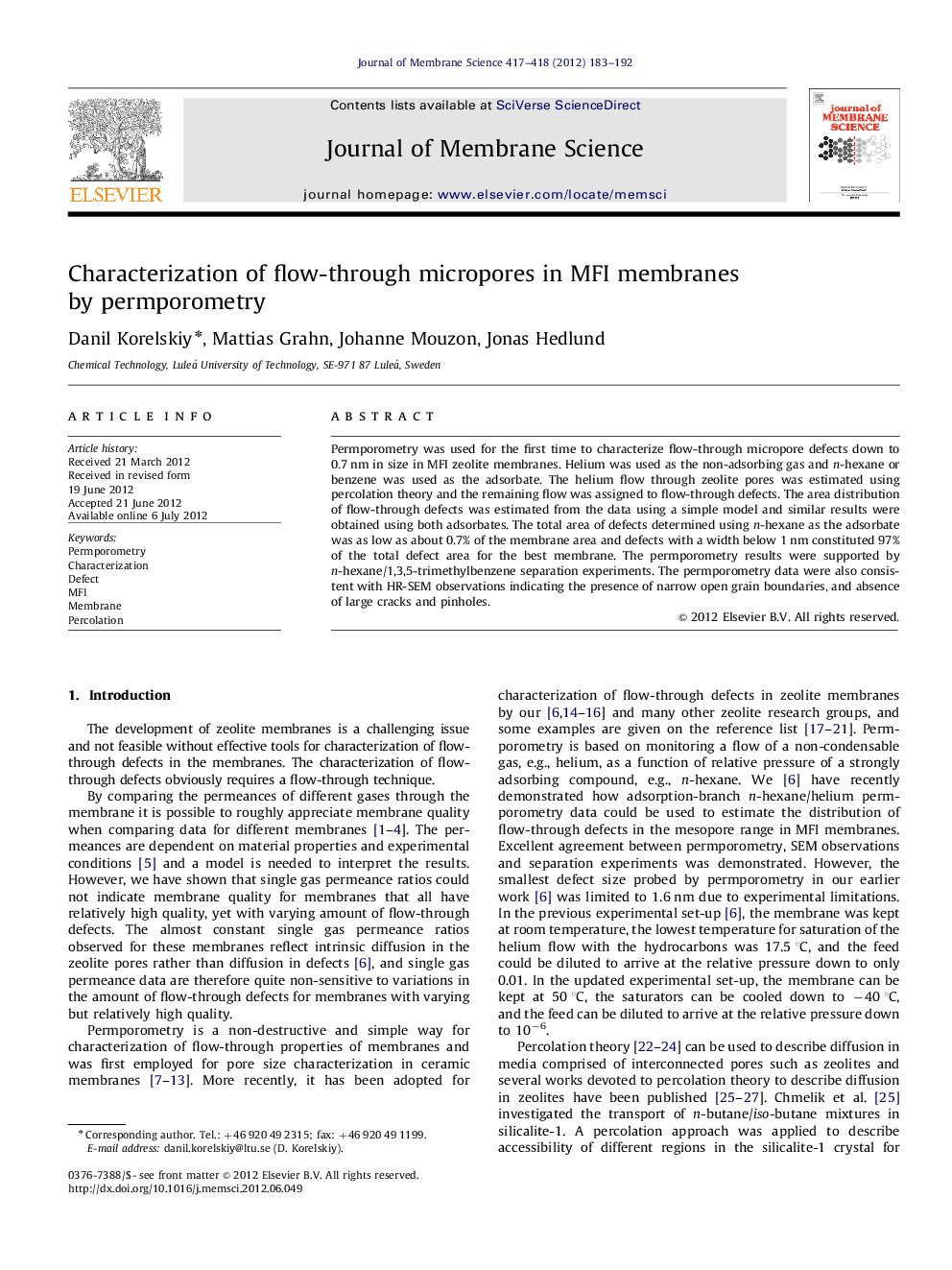| Article ID | Journal | Published Year | Pages | File Type |
|---|---|---|---|---|
| 634897 | Journal of Membrane Science | 2012 | 10 Pages |
Permporometry was used for the first time to characterize flow-through micropore defects down to 0.7 nm in size in MFI zeolite membranes. Helium was used as the non-adsorbing gas and n-hexane or benzene was used as the adsorbate. The helium flow through zeolite pores was estimated using percolation theory and the remaining flow was assigned to flow-through defects. The area distribution of flow-through defects was estimated from the data using a simple model and similar results were obtained using both adsorbates. The total area of defects determined using n-hexane as the adsorbate was as low as about 0.7% of the membrane area and defects with a width below 1 nm constituted 97% of the total defect area for the best membrane. The permporometry results were supported by n-hexane/1,3,5-trimethylbenzene separation experiments. The permporometry data were also consistent with HR-SEM observations indicating the presence of narrow open grain boundaries, and absence of large cracks and pinholes.
► MFI membranes were characterized by adsorption-branch permporometry. ► For the first time, defects down to 0.7 nm in size were detected and characterized. ► Area distribution of the defects was estimated using a model developed in the work. ► Defects smaller than 1 nm in size constituted 97% of the total area of defects. ► The results were consistent with HR-SEM observations and permeation data.
